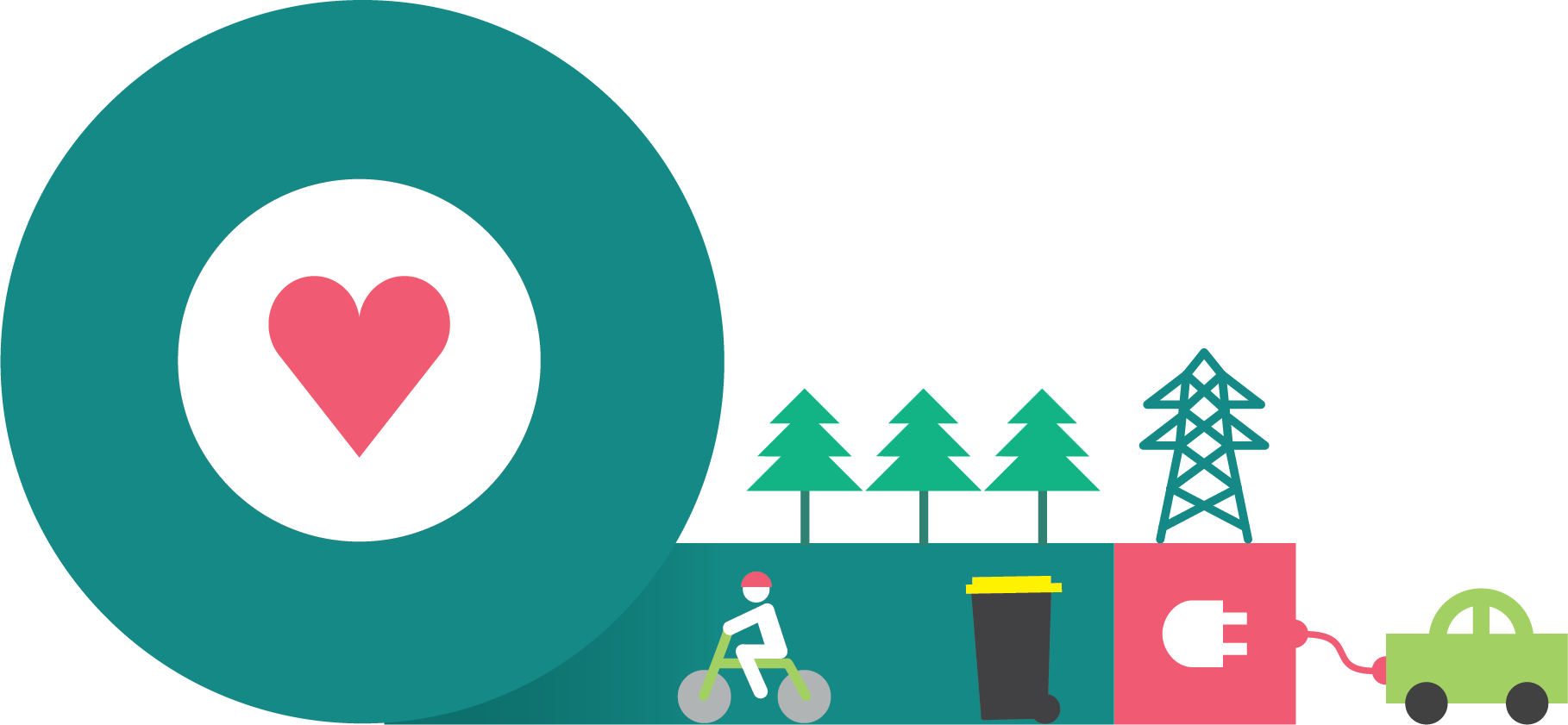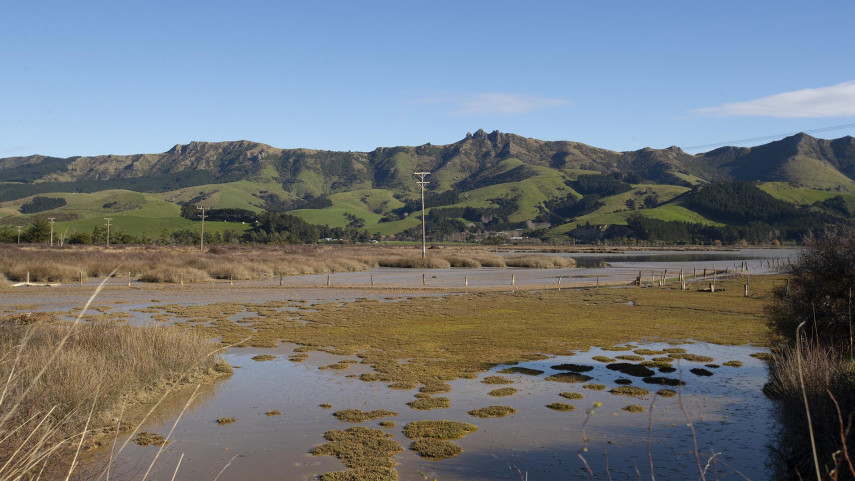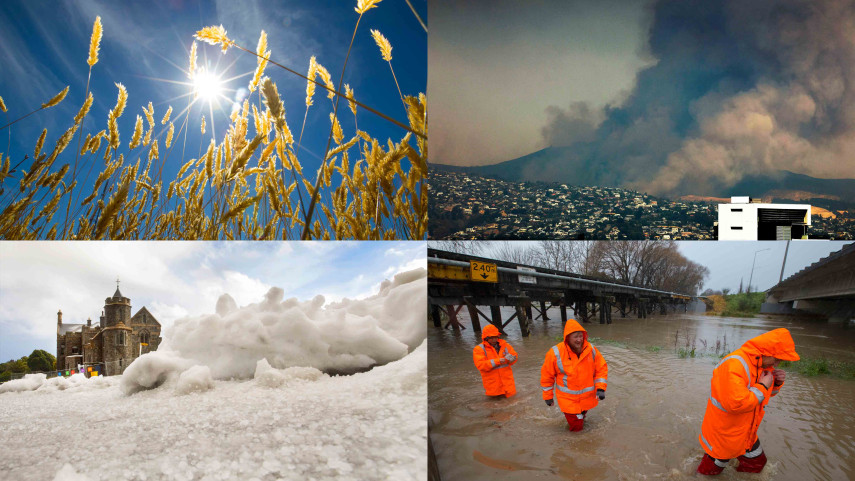Our commitment to lower emissions
We're committed to doing everything we can to reduce greenhouse gas emissions within our organisation and across the district.
Our targets for Christchurch are to halve emissions by 2030, compared with 2016-2017 levels, and to achieve net zero greenhouse gas emissions by 2045, with at least a 50% reduction in methane emissions by 2045.
We’re working to achieve our organisational target of net zero emissions for our operations by 2030. This means balancing the emissions we create with the emissions we remove.
These targets were set in 2019, when the Council declared a climate and ecological emergency, in response to strong feedback from our community(external link).
Christchurch has joined many other cities and countries worldwide that have committed to taking urgent action to cut emissions.
How we’re tracking
We have a programme of work to deliver on our Resource Efficiency and Greenhouse Gas Emission Policy [PDF, 297 KB].
We measure and report the greenhouse gas emissions across our operations and have set a target for our activities to be net carbon neutral by 2030.
While we’re making good progress in many areas, we’re not currently on track to reach our 2030 emissions reduction target for Christchurch.
We need everyone, from Council and Central Government, to businesses, communities, schools and households, to rapidly reduce emissions so we can all benefit from a more liveable city and healthy environment – and avoid the worst impacts of climate change.
Christchurch district’s total net emissions (excluding methane)
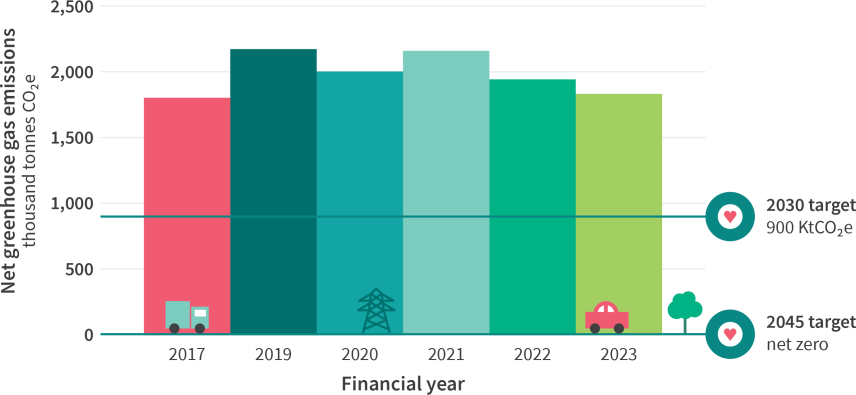
The above graph shows the total net emissions (excluding methane) for the district for each financial year, alongside the Council's targets for 2030 and 2045.
Christchurch district’s total methane emissions
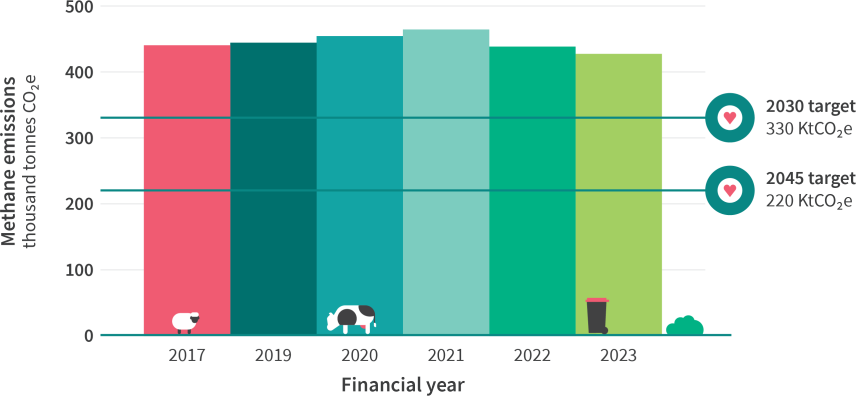
The above graph shows the total methane emissions for the district for each financial year, alongside the Council's targets for 2030 and 2045.
Key terms explained
This webpage uses some specific terms when describing greenhouse gas emissions. The following table lists those terms and their meanings.
| Term | Meaning |
|---|---|
| CO₂e | Carbon dioxide equivalent. This is a measure of the effect of different greenhouse gases on the climate, as not all greenhouse gases are the same. Some trap more or less heat in our atmosphere than CO₂. CO₂e helps us combine and measure their effects more simply by asking: If we turned all these gases into CO₂, how much would they warm our planet? |
| Net zero | Net zero means balancing the amount of greenhouse gases we put into the air with the amount we take out, for example, by planting trees. Generating net-zero emissions means we're not adding to the warming of our climate. |
| Methane | Most farm animals generate methane gas as they grow. Methane is a powerful greenhouse gas that can trap 25 times more heat than carbon dioxide over its lifetime. The Council and the New Zealand Government have separate targets for methane. |
Our emissions sources
We regularly measure the emissions generated by the Christchurch District and our Council operations. This helps us manage emissions and track our progress.
Take a look at our Emission Tracker(external link) to get a better understanding of our biggest emissions sources, as well as general transport trends in the district.
You can learn more about our emissions sources in these detailed reports:
- Ōtautahi Christchurch Greenhouse Gas Emissions Inventory Report for the 2023 financial year [PDF, 1.2 MB]
- Christchurch City Council Greenhouse Gas Emissions Inventory Report for the 2024 financial year [PDF, 598 KB]
- 2023 report [PDF, 722 KB]
Christchurch district’s emissions sources
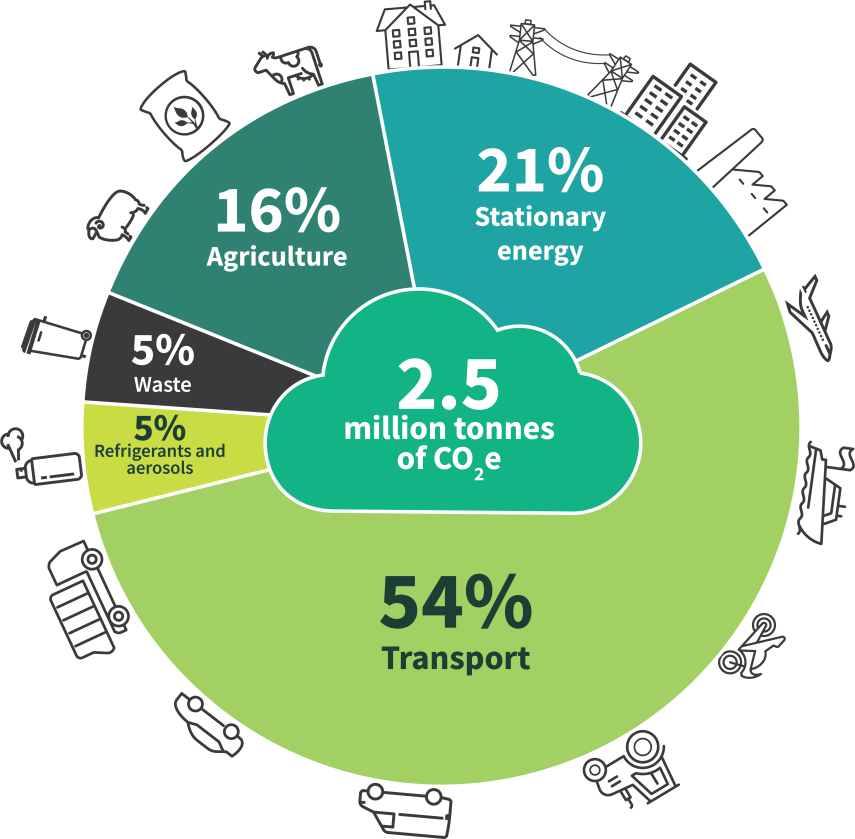
The above graph shows a breakdown of the district's emissions. It shows that our biggest emissions source is transport, at 54%, followed by 21% for stationary energy, 16% for agriculture, and the remaining 10% for waste and refrigerants and aerosols.
Council’s emissions sources
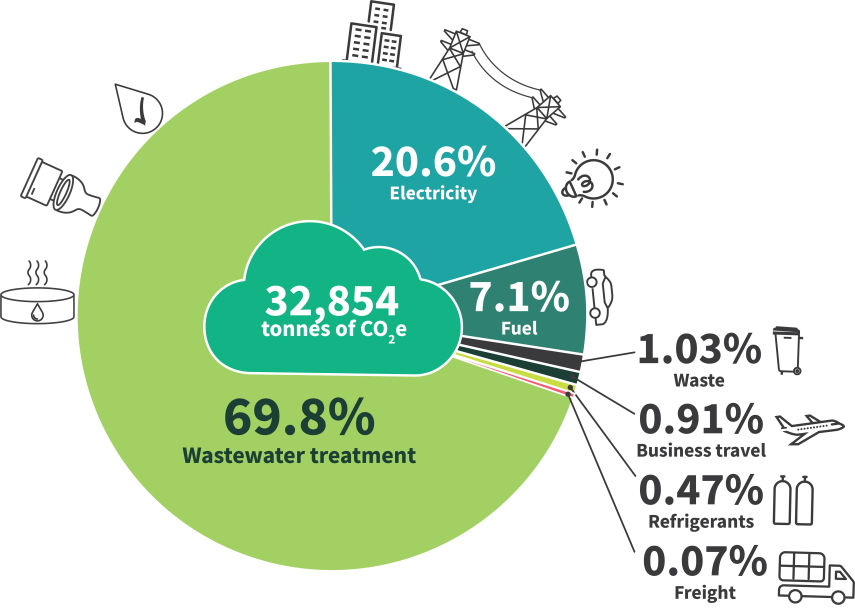
The above graph shows a breakdown of the Council's emissions. It shows that our biggest contributor is wastewater treatment, at 69.8%, followed by 20.6% for electricity, 7.1% for fuel, with waste, business travel, refrigerants and freight making up the remainder.
Calculate and reduce your emissions
We need everyone to play their part to reach our targets. These online tools can help you measure and reduce your household or business greenhouse gas emissions:

